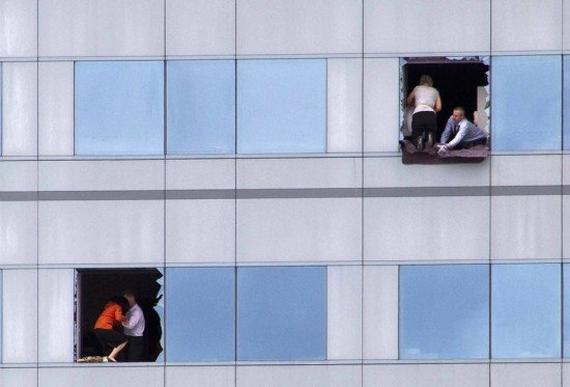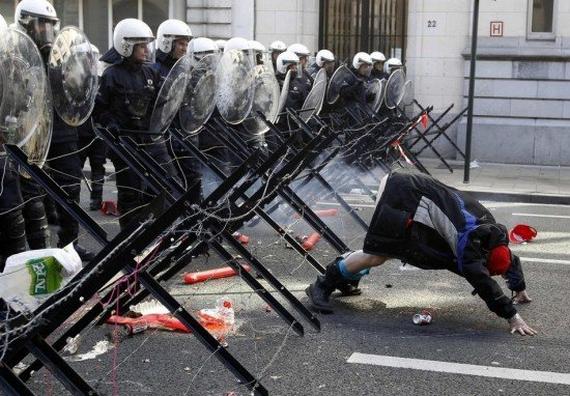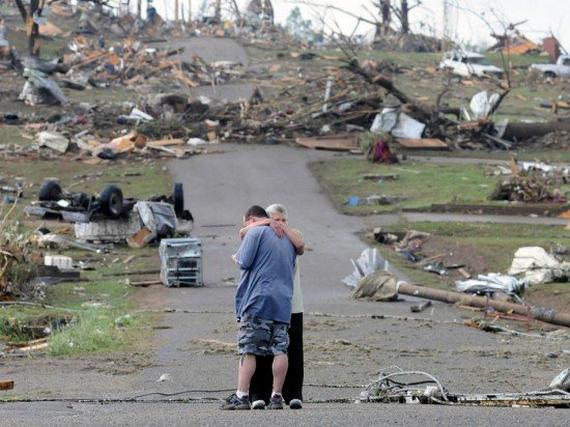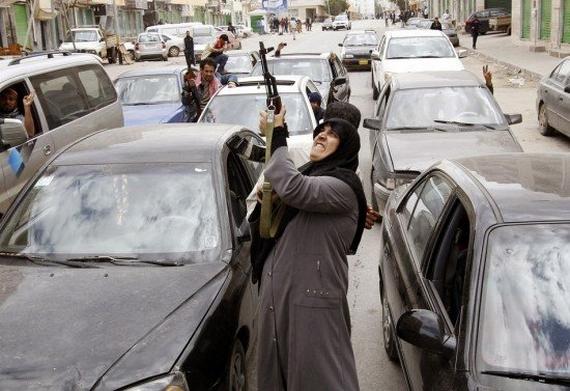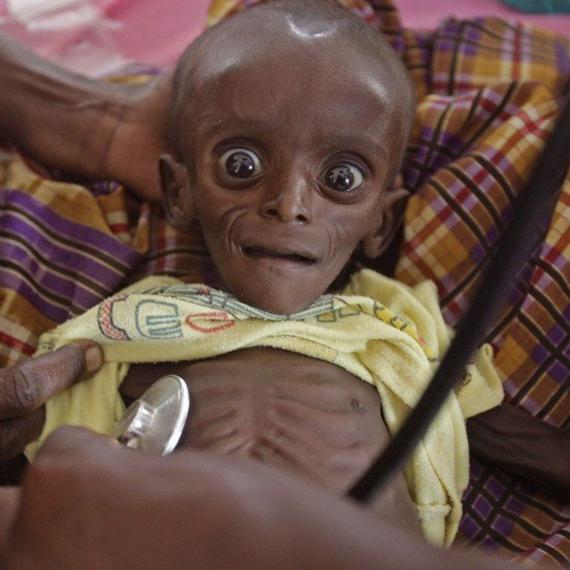Crazy World For You
Tuesday, April 10, 2012
Top 5 Bizarre Restaurants
5. Christian Cafe
The bustling New Lucky Restaurant in Ahmadabad is famous for its milky tea, its buttery rolls and the graves between the tables. Krishan Kutti Nair has helped run the restaurant built over a centuries-old Muslim cemetery for close to four decades, but he doesn’t know who is buried in the cafe floor. Customers seem to like the graves, which resemble small cement coffins. The graves are painted green, stand about shin-high, and every day the manager decorates each of them with a single dried flower. They’re scattered randomly across the restaurant. The waiters know the floor plan like a bus driver knows his route, and they’ve mastered the delicate dance of shimmying between graves with a tray of hot tea in each hand.
3. Modern Toilet
At Modern Toilet, a restaurant in Taiwan, every customer sits on a stylish acrylic toilet (lid down) designed with images of roses, seashells or Renaissance paintings. Everyone dines at a glass table with a sink underneath. The servers bring your meal atop a mini toilet bowl (quite convenient, as it brings the food closer to your mouth), you sip drinks from your own plastic urinal (a souvenir), and soft-swirl ice cream arrives for dessert atop a dish shaped like a squat toilet. According to the manager, “it’s supposed to shock and confuse the senses”.
2. Hitler’s Cross
Hitler’s cross a cafe in Mumbai, India, complete with swastika logo was the brainchild of Puneet Sabhlok, a novice restaurateur, who said he wanted a catchy café name to sell his $3 to $4 plates of crostini tonno, pear & ricotta salad and pannacotta. So he went with Hitler’s Cross. “Hitler is a catchy name. Everyone knows Hitler,” he explained in an interview. After intense pressure from the ADL, German & Israeli diplomats, and India’s Jewish community, the cafe’s name was changed to “The Cross”.
1. Nyotaimori Restaurants
In Japan there are many restaurants that follow the Nyotaimori practice of serving food on human bodies – usually naked. Before becoming a living sushi platter, the person is trained to lie down for hours without moving. She or he must also be able to withstand the prolonged exposure to the cold food. Body hair, including pubic hair, would also be shaved, as a display of pubic hair may be seen as a sexual act. Before service, the individual would take a bath using a special fragrance-free soap and then finish off with a splash of cold water to cool the body down somewhat for the sushi.
In Japan, Christianity is still a novelty, so they’ve turned it into a theme-restaurant in Shinjuku. This place looks like a church and is full of religious imagery and statues, which makes it an unorthodox venue for knocking back cocktails. Worth a visit, (but you might feel compelled to behave yourself.) Christian Cafe is decorated with statues of saints, the Virgin Mary and thing mostly commonly found in Catholic churches.
4. New Lucky
3. Modern Toilet
At Modern Toilet, a restaurant in Taiwan, every customer sits on a stylish acrylic toilet (lid down) designed with images of roses, seashells or Renaissance paintings. Everyone dines at a glass table with a sink underneath. The servers bring your meal atop a mini toilet bowl (quite convenient, as it brings the food closer to your mouth), you sip drinks from your own plastic urinal (a souvenir), and soft-swirl ice cream arrives for dessert atop a dish shaped like a squat toilet. According to the manager, “it’s supposed to shock and confuse the senses”.
2. Hitler’s Cross
Hitler’s cross a cafe in Mumbai, India, complete with swastika logo was the brainchild of Puneet Sabhlok, a novice restaurateur, who said he wanted a catchy café name to sell his $3 to $4 plates of crostini tonno, pear & ricotta salad and pannacotta. So he went with Hitler’s Cross. “Hitler is a catchy name. Everyone knows Hitler,” he explained in an interview. After intense pressure from the ADL, German & Israeli diplomats, and India’s Jewish community, the cafe’s name was changed to “The Cross”.
1. Nyotaimori Restaurants
In Japan there are many restaurants that follow the Nyotaimori practice of serving food on human bodies – usually naked. Before becoming a living sushi platter, the person is trained to lie down for hours without moving. She or he must also be able to withstand the prolonged exposure to the cold food. Body hair, including pubic hair, would also be shaved, as a display of pubic hair may be seen as a sexual act. Before service, the individual would take a bath using a special fragrance-free soap and then finish off with a splash of cold water to cool the body down somewhat for the sushi.
5 World's Fastest Fighter Aircrafts Ever
A fighter aircraft is a military aircraft designed primarily for air-to-air combat with other aircraft, as opposed to bombers and attack aircraft, which are designed primarily to attack ground targets. The hallmarks of a fighter are its speed, maneuverability, and small size relative to other combat aircraft. Now take a look at the top 5 fastest fighter aircraft of all time.
1. X 15
Although X 15 is a rocket powered engine base aircraft, its counts as fastest manned plane. The X-15 was launched from under the wing of a B-52. Thrust from one engine is 70,400 lbs. The highest recorded speed of 4,520 mph and can reach a maximum altitude of 354,200 feet.
2. F 22 Raptors
F 22 Raptor called 21 century fighter aircraft, design by Lockheed Martin Aeronautical Systems USA. It is a twin engine; single seated and rated as fifth generation aircraft. It has additional capabilities like better ground attack, electronic warfare system and signal intelligence role.
3. sukhoi SU 35
The Su-35S is a part of the Russian Air Force, was the result of a series of design studies for a deep modernization of the Su-27M design. This fighter plane was design against the F-15C & E during the 1980s. The new Su-35BM retained the basic aerodynamic design and much of the structural design of the late model Flanker, but consists of important aerodynamic enhancements and completely new engines and digital system of aviation.
4. F-35 Lightning ii
Joint Strike Fighter design in the early 1990s through the restructure and integration of several DoD tactical aircraft and technology. The DoD’s goal was to use the latest technology in a common family of aircraft to meet the future strike requirements of the Services and US Allies. In 2006 the F-35 fighter was officially named “Lightning II”. it is being devolved in three models (I) A conventional land based version model STOVL (short take-off vertical landing) for USAF. (II) Second model for the USMC, the Royal Air Force and the Royal Navy designated the model (III) a carrier-based version for the U. S. Navy designated the model.
5. Dassault Rafale
The Dassault Rafale is a generation 4.5 fighter currently operated by the French Air Force and French Navy. It is a successor to the highly acclaimed Mirage series, the Rafale is meant to replace almost every other combat airframe design currently in French military service.
Top 5 Terrible Issues Facing Children Worldwide
5. Child Labor
An estimated 211 million children between the ages of 5 and 14 are working around the world, according to the International Labor Organization. Of these, 120 million children are working full time to help support their impoverished families.
There are millions of children whose labor can be considered forced, not only because they are too young to choose to work, but also because they are, in fact, actively coerced into working. These include child bonded laborers — children whose labor is pledged by parents as payment or collateral on a debt — as well as children who are kidnapped or otherwise lured away from their families and imprisoned in sweatshops or brothels. In addition, millions of children around the world work unseen in domestic service — given or sold at a very early age to another family.
Forced child laborers work in conditions that have no resemblance to a free employment relationship. They receive little or no pay and have no control over their daily lives. They are often forced to work beyond their physical capacity and under conditions that seriously threaten their health, safety and development. In many cases their most basic rights, such as freedom of movement and expression, are suppressed. They are subject to physical and verbal abuse. Even in cases where they are not physically confined to their workplace, their situation may be so emotionally traumatizing and isolating that once drawn into forced labor they are unable to conceive of a way to escape.
In Thailand, NGOs have estimated that up to a third of prostitutes are children under 18. A study by the International Labor Organization on child prostitution in Vietnam reported that incidence of children in prostitution is steadily increasing and children under 18 make up between 5 percent and 20 percent of prostitution depending on the geographical area. In the Philippines, UNICEF estimated that there are 60,000 child prostitutes and many of the 200 brothels in the notorious Angeles City offer children for sex. In India as many as 200,000 Nepali girls, many under the age of 14, have been sold into red-light districts. Nepalese girls, especially virgins, are favored in India because of their fair skin and young looks. Every year about 10,000 Nepalese girls, most between the age of nine and 16, are sold to brothels in India. In El Salvador, one-third of the sexually exploited children between 14 and 17 years of age are boys. The median age for entering into prostitution among all children interviewed was 13 years.
3. Internet Child Pornography
On a show that aired September 2, 2008, Oprah Winfrey showed a map that clearly conveyed how fast one pornographic image of a child being molested can spread. From a computer in Washington, DC, the image spread within 24 hours, all across the United States. The demand for new images and videos is so high that authorities report they are tracking increasingly brutal pornography with younger and younger victims.
2. Trafficking and Slavery
Trafficking is the fastest growing means by which people are forced into slavery. It affects every continent and most countries. Currently, children are trafficked from countries such as Bangladesh, Pakistan, Sudan and Yemen to be used as camel jockeys in the UAE. Furthermore, Anti-Slavery International also has evidence that children are also being trafficked to be used as camel jockeys in other Gulf states including Kuwait, Qatar, Oman, and also internally in Sudan. The use of children as jockeys in camel racing is itself extremely dangerous and can result in serious injury and even death. Some children are also abused by the traffickers and employers, for example by depriving them of food and beating them. The children’s separation from their families and their transportation to a country where the people, culture and usually the language are completely unknown leaves them dependent on their employers and de facto forced laborers.
According to UNICEF, over 200,000 children work as slaves in West and Central Africa. Boys are usually sold to work on cotton and cocoa plantations while girls are used as domestic servants and prostitutes. In some cases, children are kidnapped outright and sold into slavery while in others, families sell their children, mostly girls, for as little as $14.
1. Military Use of Children
Around the world, children are singled out for recruitment by both armed forces and armed opposition groups, and exploited as combatants. Approximately 250,000 children under the age of 18 are thought to be fighting in conflicts around the world, and hundreds of thousands more are members of armed forces who could be sent into combat at any time. Although most child soldiers are between 15 and 18 years old, significant recruitment starts at the age of 10 and the use of even younger children has been recorded.
Easily manipulated, children are sometimes coerced to commit grave atrocities, including rape and murder of civilians using assault rifles such as AK-47s and G4s. Some are forced to injure or kill members of their own families or other child soldiers. Others serve as porters, cooks, guards, messengers, spies, and sex slaves.
Source
Monday, April 2, 2012
The Amazing Imperial Train
The train was built in 1894-96, respectively. The composition of cars has changed several times, old cars were changed to new, changing and interior . In 1902 train consisted of ten cars. Some of them are meant for the royal family and retinue emperors .Another held baggage wagons, serving and kitchen. Later was added the eleventh car to be used as a church.
Emperor Nicholas II and his wife Empress Alexandra Feodorovna and Tsarevich Alexei
Emperor Nicholas II and his wife Empress Alexandra Feodorovna and Tsarevich Alexei
The wagons were painted blue, decorated with gold seams. All the wooden parts were made of Indian tika.Paneli, ceilings and furniture were made of polished oak, walnut, white and gray beech, maple and Karelian berezy.Poly were covered with linoleum and carpets. Were the most comfortable, of course, the cars were all imperators.Tam family to have fun and productive work. Mezhdu coupe Emperor and Empress was bimetallic bath (outside of copper, silver inside).
The Most Powerful Image In 2011
Online edition of BuzzFeed published a list of the most impressive pictures of the year. Most of the photographs that shocked the world in 2011, is occupied by natural disasters – the tsunami in Japan, tornadoes in the United States, drought in Africa, floods in Thailand. A considerable proportion of occupied and photo riots in the streets of Britain, Canada, USA and the revolution in Egypt.
An employee of a Charitable Organization with the help of photographs of rotting HIS Corpse iPad Cows during the Drought in Africa. Eruption Puyehu (Puyehue), Chile.
An employee of a Charitable Organization with the help of photographs of rotting HIS Corpse iPad Cows during the Drought in Africa. Eruption Puyehu (Puyehue), Chile.
Subscribe to:
Posts (Atom)











































